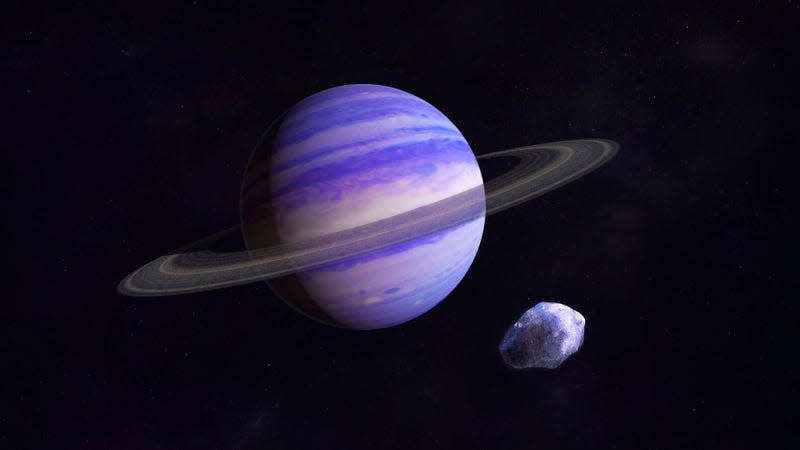How the Color Purple Could Lead Us to Alien Life

In a little more than 30 years, we went from knowing only of the planets in our star system to discovering over 5,000 distant worlds spread across the cosmos. So far, none have looked quite like Earth. If an Earth-like planet was orbiting another star, however, it may look different than our precious pale blue dot. In fact, it could don a daring shade of purple.
A group of researchers from the Carl Sagan Institute are calling for the need to search for purple worlds when hunting for signs of life in the universe. In a new paper published in the Monthly Notices of the Royal Astronomical Society: Letters, the researchers argue that purple bacteria can thrive on other planets while exposed to a wide range of conditions, and that the worlds they inhabit could produce a distinct “light fingerprint.”
“We need to create a database for signs of life to make sure our telescopes don’t miss life if it happens not to look exactly like what we encounter around us every day,” Lisa Kaltenegger, director of the Carl Sagan Institute, and co-author of the new study, said in a statement.
Purple bacteria are photosynthetic microorganisms that live in both aquatic and terrestrial environments, surviving on little or no visible light or oxygen. They still exist in some places on Earth today, like in shallow waters, coasts and marshes, as well as deep-sea hydrothermal vents. In fact, when microbial life first began emerging on Earth some three billion years ago, purple bacteria was likely one of the most widespread forms of life, based on previous research.
The team behind the new study collected and grew samples of more than 20 purple sulfur and purple non-sulfur bacteria. The researchers then measured the purple bacteria’s biopigments and light fingerprints, and created models of Earth-like planets with varying conditions and cloud cover. In those simulated environments, both wet and dry purple bacteria produced intensely colored biosignatures, according to the study.
Purple bacteria may be better-suited to thrive on planets that orbit cooler red dwarf stars, the most prevalent type of star in the Milky Way, according to the scientists. “They already thrive here in certain niches, just imagine if they were not competing with green plants, algae and bacteria” Lígia Fonseca Coelho, a postdoctoral associate at the Carl Sagan Institute, and first author of the study, said in a statement. “A red sun could give them the most favorable conditions for photosynthesis.”
Based on their findings, the researchers are cataloging the different colors and chemical signatures that a wide range of organisms and minerals would produce in an exoplanet’s reflected light. In doing so, the team is equipping next-generation telescopes with the tools needed to find different forms of life in the universe, even ones that don’t necessarily resemble life on Earth.
“We are just opening our eyes to these fascinating worlds around us,” Kaltenegger said. “Purple bacteria can survive and thrive under such a variety of conditions that it is easy to imagine that on many different worlds, purple may just be the new green.”
More: Aliens Could Be Trying to Get Our Attention Via Supernova-Timed Beacons

